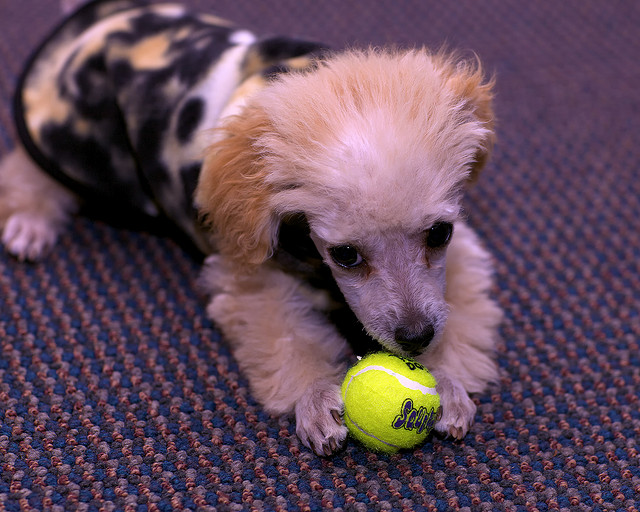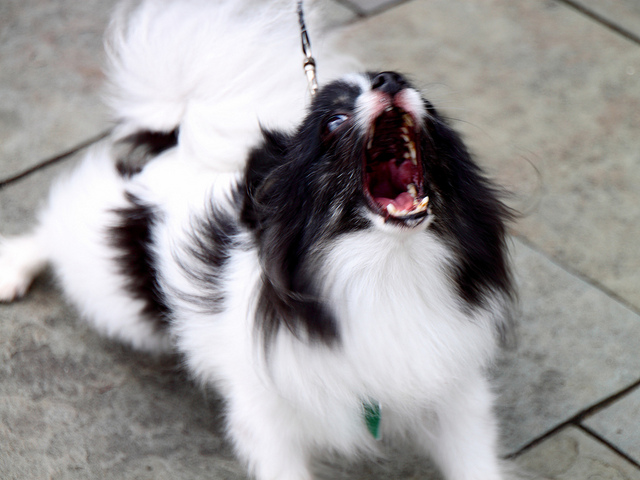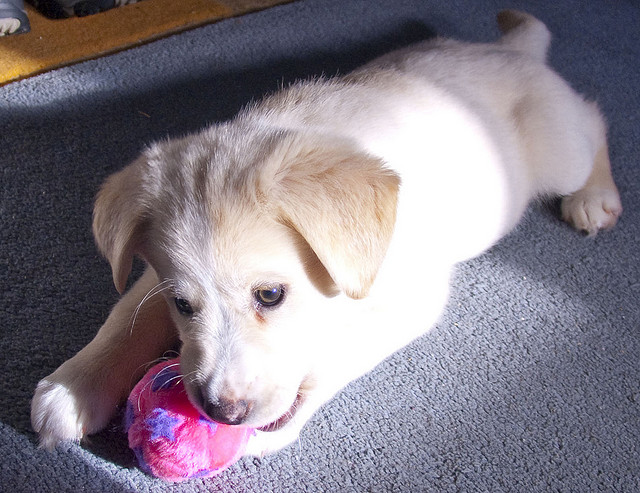Most dogs that are up for adoption have gone through extensive screening to know what type of family they will fit in best with. This is a good process compared to getting one from a breeder that will not know how the dog will react or what types of homes they need to be placed in.
Below are some tips on how to prepare your home and your family for a newly adopted member:
Things to Buy Before or Immediately After the Adoption – Food, bowls for water and food, a leash, collar, and bedding. You can acquire bedding by visiting several garage sales. What works best are baby blankets, or thin blankets which can fit in the washing machine. Often cast-off, bulky comforters can be cut into quarters.An ID tag. Some pet stores, such as PetSmart, have machines were you can create an ID tag immediately. Some rescues and shelters also provide an ID tag.
The Adult Dog – There are many advantages to adopting an adult dog. You already know the size and the disposition of your pet, something not known of a puppy. However, you do not know your pet’s past. You do not know if he is housebroken or trained. He has had to adjust to different situations so it is imperative you be patient with your new pet and let him know and understand your patterns.
The First Day Home – To avoid your new best friend from getting diarrhea from a change in diet, give boiled potatoes with the new food. Works great. Rice also works but is more fattening.
Keep your new dog on a leash. Show him where his water and food dish are kept. Show him where he is to sleep. When he is indoors be sure and keep him confined with you, taking him outdoors at frequent intervals to relieve himself. Take him to the same spot each time and praise him heartily when he goes. Until he learns this new routine he will have to be watched closely. If there is an accident in the house please do not assume he is not housebroken. He must get accustomed to his new home and his new routines. However, loudly say “NO!” and take him outside immediately. You must catch the dog in the act if the correction is to be effective. NEVER hit your dog if an accident occurs. Praise, not punishment, is the key to a well behaved pet.
Period of Adjustment – The first couple of weeks you and your pet are “getting to know one another”. He doesn’t know why he has come to your home nor what is expected of him. Please be patient with him and anticipate problems before they occur. Don’t leave tempting shoes, clothing, or children’s toys within reach of your dog. If he is left out in your backyard while you work, please understand the first few days will be rough on him. Try to leave the home with as little fanfare as possible. Tearful goodbyes do nothing but add to your dog’s anxiety.
Things to Watch For – When he’s first settling in, your dog may experience shyness, anxiety, restlessness, excitement, crying or barking. He may exhibit excessive water drinking, frequent urination, or diarrhea. His appetite may not be good. If any of these symptoms last more than a few days, call your veterinarian.
Be Consistent – Your new dog must learn a whole set of new rules. Be patient and be consistent. If you want him off the furniture, don’t allow him to sit on the couch “sometimes”. Don’t allow him to do something one time and forbid it another.
Obedience Training – Most cities’ Parks and Recreation Departments offer dog obedience training. A six to eight week class taking one hour of your time one day a week, and a training lesson with your dog 1/2 hour a day, will teach your dog the simple obedience commands so necessary in having a well-behaved pet. Just as we must teach our children manners, we must also teach our pet.
Sometimes it takes a while for the newly adopted pet to adjust depending on their age, breed and what they have been through. After the adjustment period they will fit in as one of the family and you may forget what life was like without them.
Do you have a heartwarming adoption story that you can share with us below?
Article Source: Animal Match Rescue Team Inc.





Leave a Reply